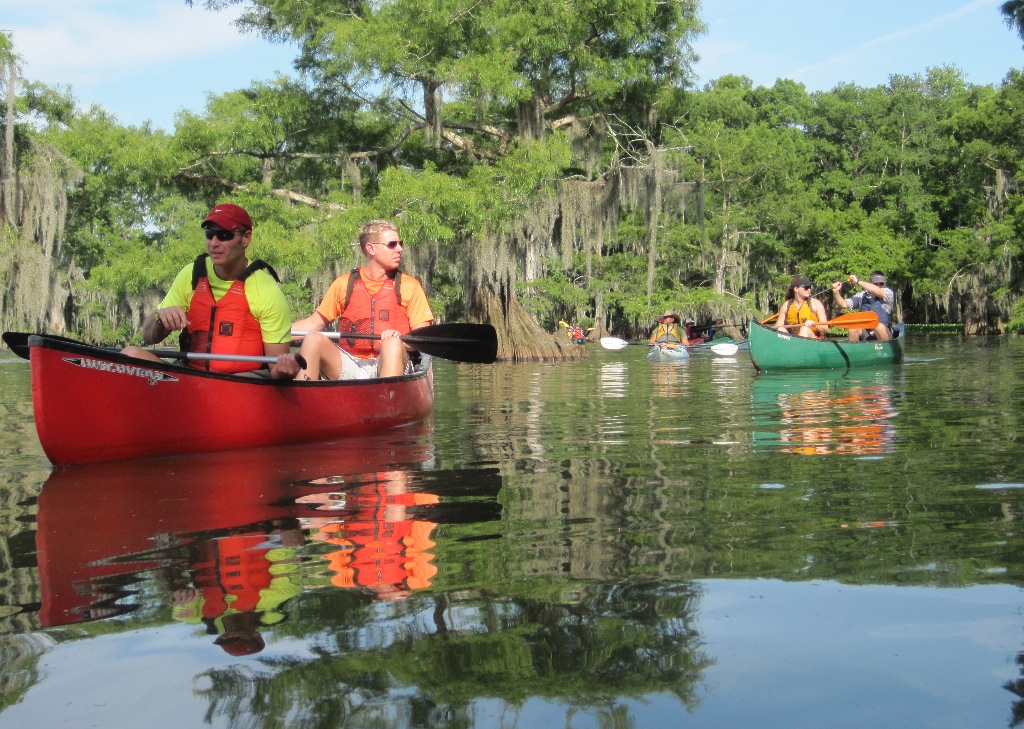
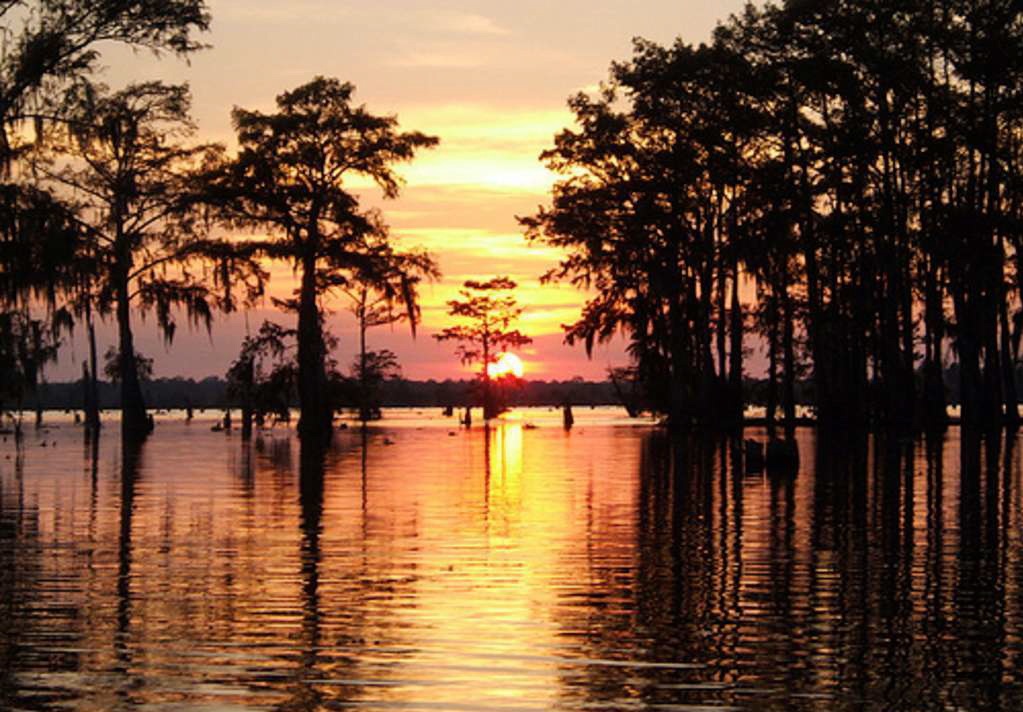
| Route 66 | Cities | Beaches |
 |
 |
 |
Barren |
Blue |
Miami |
Nolin |
| Atchafalaya | Big Dismal | Boundary Waters | Everglades | Okeefenokee | Pascagoula | Suwanee |
| The Atchafalaya ("atCHAfalaya") Basin is a separate world, unlike anything you've ever seen before. It's a 150 mile long, 50 mile wide, three feet deep river flowing through a one million five hundred thousand acre Cypress forest teeming with wildlife. The Basin begins at Simmesport 30 feet above sea level and flows to the Gulf of Mexico, meaning it drops a mere two inches per mile and has a barely perceptible current. There are lakes, channels, old riverways, canals, backwaters, lagoons and bayous interspersed with long narrow ridges of land about a foot above the water. Some of these are manmade levees but many have been created by the water itself as it drops sediment. The Atchafalaya would be the main Mississippi River today except we built a diversion control structure in 1963 to make sure Baton Rouge and New Orleans were not stranded. As it is, 40% of the Mississippi water flow diverts and flows down the Atchafalaya. | 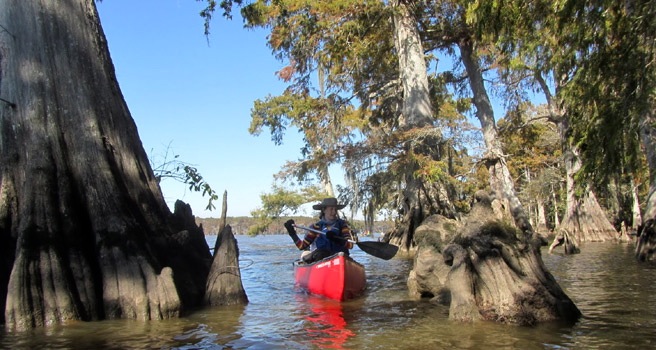 |
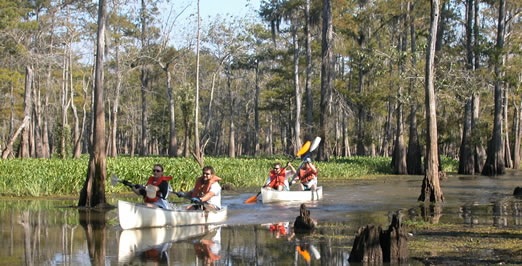 |
The Atchafalaya is a Paddler's Paradise but it's bewildering for a first time visitor. We have put a tremendous amount of thought into this. Our first recommendation is that you schedule a visit in late Spring or early Summer. The Atchafalaya is in flood at this time so the water has spread out to maximum coverage. You can access everything. Over the Summer and especially in Fall, water levels drop significantly. Islands appear everywhere. You will often find yourself stopped by emerging land and have to backtrack. You'll need to get out and drag your canoe over shallows, and you'll end the day soaking wet and covered in mud. All the photos on this page were taken in the Spring. The heat, humidity and mosquitoes are less oppressive. We have chosen two basecamp locations we believe are ideal for first timers and two linear routes we believe are ideal for the experienced. |
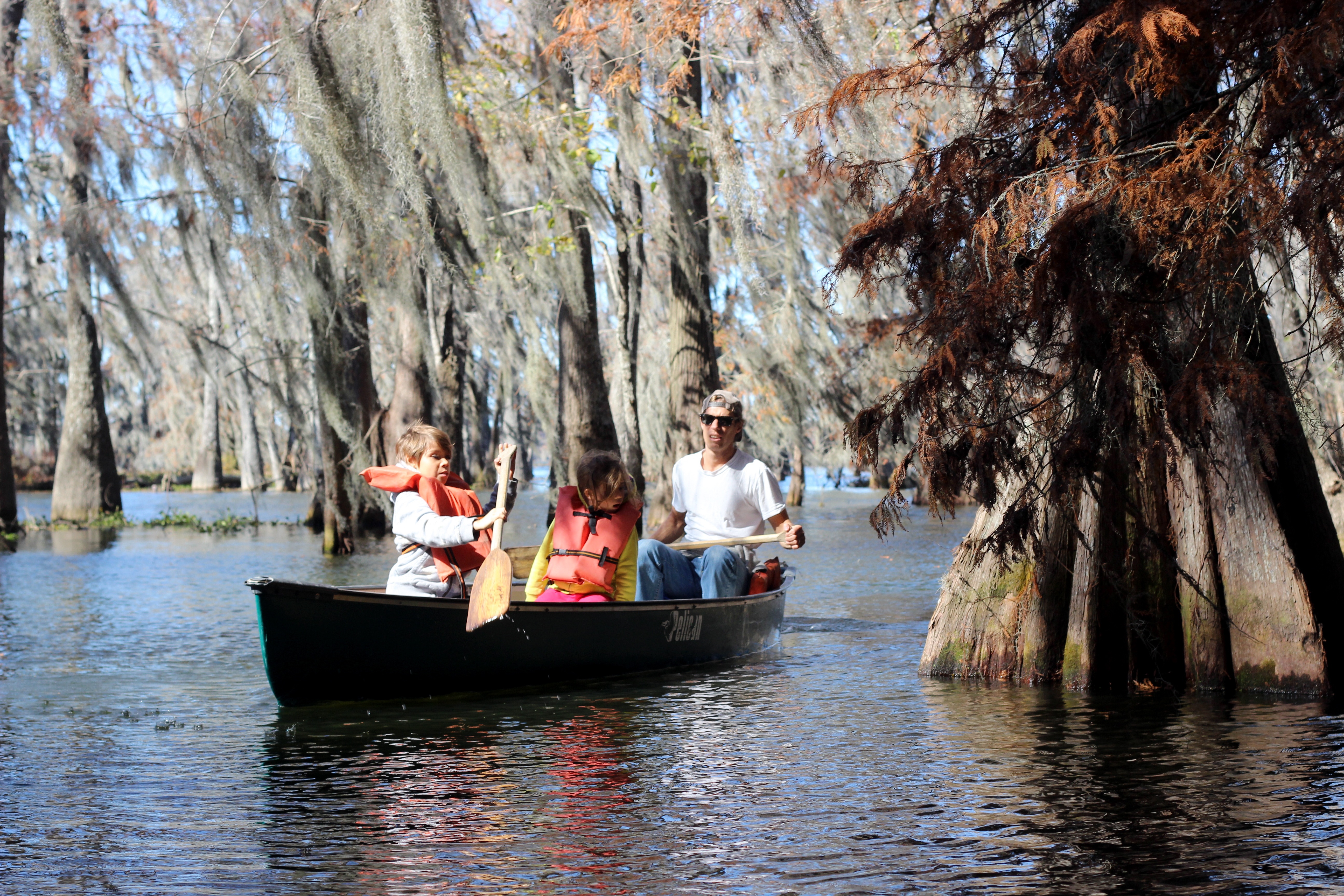 |
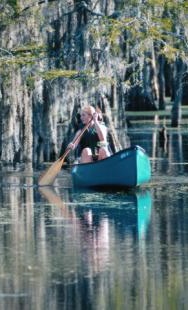 |
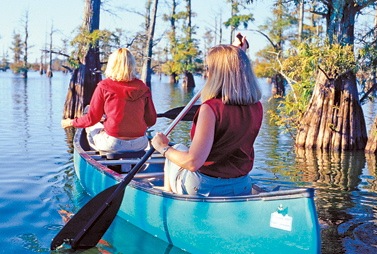 |
| Our first recommendation is Lake Fousse Point State Park. This is one of the nation's greatest state parks and almost nobody outside of Louisiana knows about it. They have beautiful cabins right on the water. There is canoeing in the state park---four of the photos on this page were taken there---and you can paddle out of the park into the greater Atchafalaya Basin in every direction. To get there, follow I-10 to Henderson exit 115 (just east of Lafayette), head south into the swamp on highway 352 (which becomes Catahoula Levee Road, then Bayou Benoit Levee Road) and drive 19 miles. Use the cabin as a weeklong basecamp and canoe a different route every day. If you don't want to haul your own canoe, you can rent them at the park. You can paddle Lake Fousse, Dauterive Lake, over 100 side channels and canals, Benoit Bayou. Catahoula Bayou, and various tributaries. Take your groceies with you; there are no stores. | 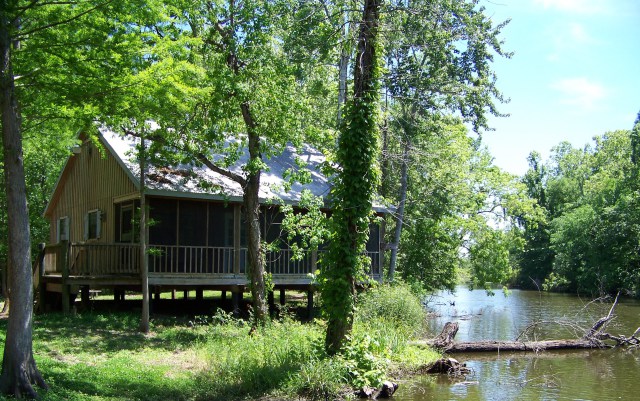 |
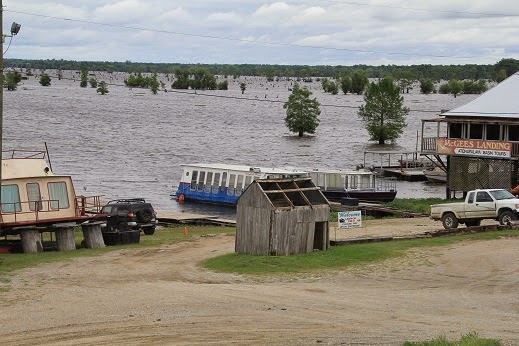 |
For your second trip, we recommend McGee's Landing and Atchafalaya Basin Landing, adjacent to I-10 at exit 115, on the Henderson Levee. You can rent cabins here. There are groceries, restaurants, marinas and swamp tours. You can rent houseboats. One rents them moored to the dock. The other tows your houseboat to a remote location, moors you to a tree, and comes back for you at a day and time you choose. We urge you to seriously consider this option. It's a unique experience. However, whether you choose a cabin or houseboat, the Henderson Levee is a great central location. It sits at the intersection of a dozen bayous, coulees, canals, channels, lakes and tributaries. You could set off in your canoe every day for a month and never retrace a route. And, after a day on the water, you have a dozen outstanding Cajun restaurants within a few miles. To get there, turn left off the exit ramp, come under I-10, turn left onto 352, drive through Henderson, and turn right onto Henderson Levee Road. You'll come to Atchafalaya Basin Landing first. McGee's Landing is a few miles further. The half day guided swamp tours are one way to learn about the area before setting out on your own. |
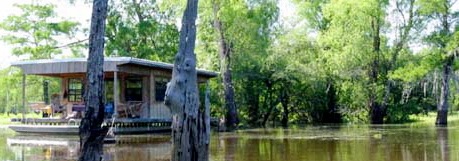 |
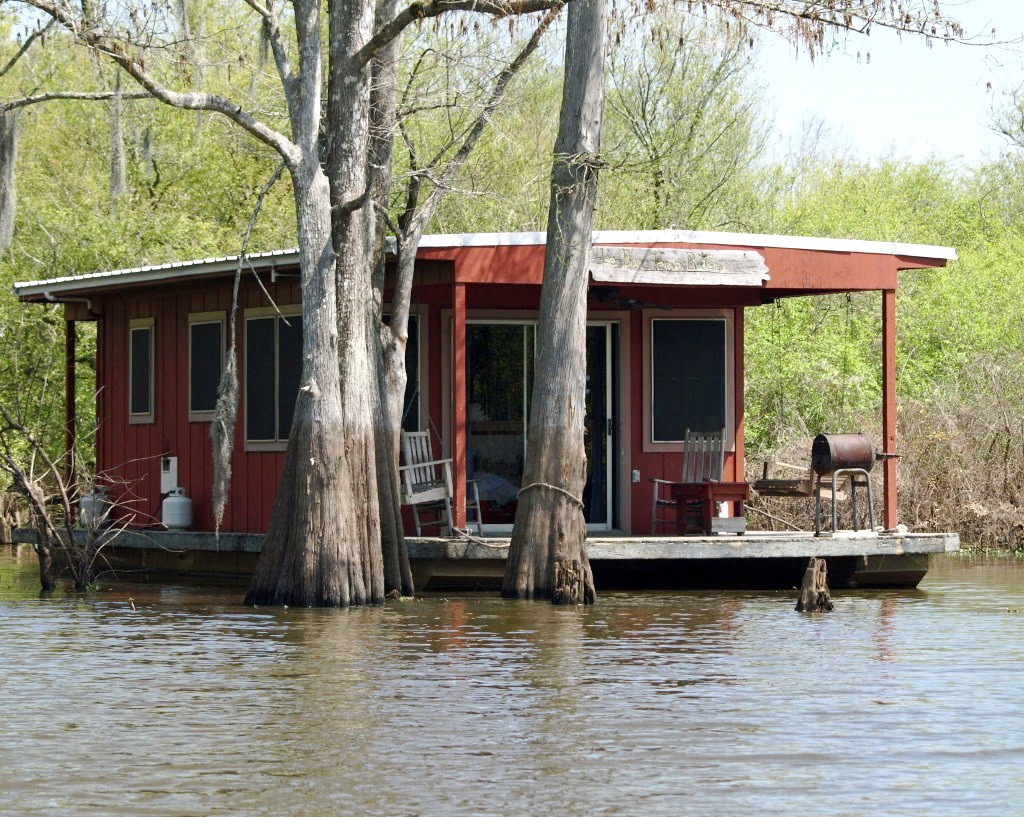 |
| Once you've come down for a couple of basecamping trips and learned the skills needed to find your way around the Atchafalaya, you're ready to try a weeklong cruise down one of the bayous. ("Bayou" is French for slow, shallow, meandering river.) The most famous of these is the Bayou Teche, a long, winding, beautiful waterway flowing along the west side of the Basin. It also has great historical significance. A strong Native American culture existed here. The original Cajuns (Arcadians; they came from Novia Scotia) settled along the banks of the Bayou Teche and fanned out across the Basin from here. Great early sugar plantations were carved out here. Several importsnt Civil War battles were fought here. This was the channel for the Mississippi about 4500 years ago. The Bayou Teche begins at Point Barre where five smaller bayous merge, and ends at Berwick, where it empties into the main Atchafalaya waterway. This means if you can paddle 25 miles in 10 hours, you can paddle the length of the Bayou Teche in a week. | 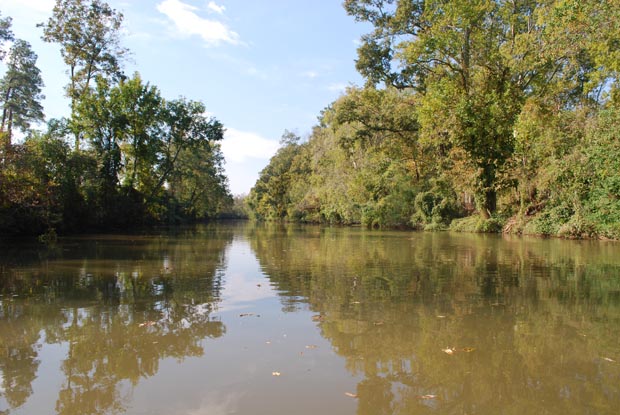 |
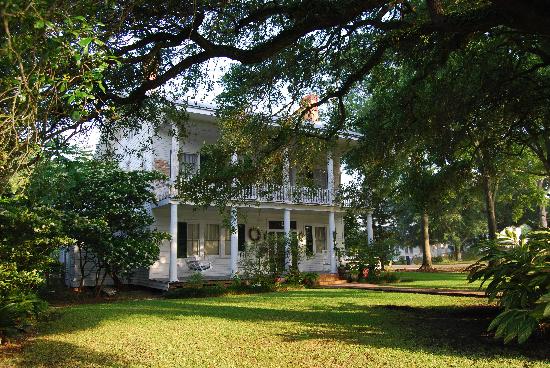 |
The Bayou Teche is the west boundary of the Atchafalaya Basin, and over four thousand years the silt has built up on the west side. In flood time, water spills over toward the east, toward the center of the Basin, but not to the higher ground to the west. In the last 300 years, that has allowed eight small towns to grow on the west bank. They make this trip unique : you can stop in the towns for lodging, restaurants and supplies. Each town has a motel, bed and breakfast and campground, and some have two or three. Shown at left is St. Martinville. Spending the nights in these towns allows you to immerse yourself in Cajun culture, a fascinating aspect of America with its own foods, language and traditions. Cajuns have learned to not only live with the Atchafalaya, but prosper. Their isolated towns are beautiful, and so far from the interstates that few tourists find their way here. To get to Point Barre, come in on I-10, take I-49 north, and turn east on state 190. But the truth is, you need an outfitter to drop you off and pick you up. For this, we recommend Pack & Paddle, 601 East Pinhook Road, Lafayette, 70501, 337-232-5854, info@packpaddle.com. |
| The Bayou Teche towns and mileages from the previous town are as follows : Arnaudville 15 mi., Breax Bridge 15 mi., St. Martinsville 20 mi., New Iberia 24 mi., Charenton 20 mi., Franklin 15 mi., Berwick 27 mi. Remember there is no discernible current, so without the water pushing you, you'll be paddling more and for longer than usual. However, if you averaged only 2.5 miles an hour, you could push off at 9 a.m. and reach your next town by 7 p.m. And most paddlers in condition can average 3-4 miles an hour, meaning you would reach your next town every day by 3-5 p.m. | 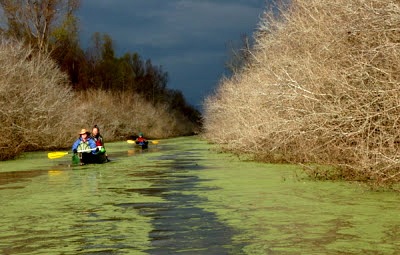 |
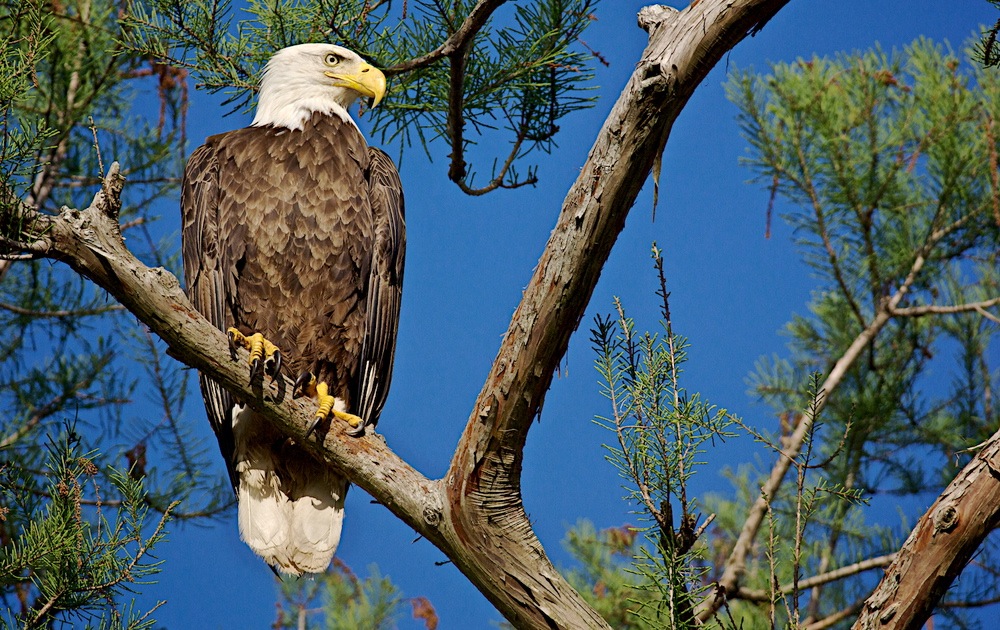 |
The Atchafalaya Basin is one of the great wildlife preserves in the world. The Basin has as much variety of fish, reptiles, birds and mammals as anywhere in North America. Bald Eagles had always been plentiful. But heavy use of DDT in the midwest flowed down the Mississippi and into the Atchafalayan waters, contaminated the fish, which contaminated the Eagles, and caused their egg shells to crumble without hatching. By the 1980s their numbers had dropped to only 120. Then we outlawed DDT, and immediately the Eagles began coming back. Now, they're off the endangered list and as healthy as ever. These are magnificant birds. Their nests are 12 feet across and weigh several hundred pounds. They thrive here because of the plentiful fish and the tall trees with spreading branches where they can survey the surrounding water, as seen at left. Every last week of February an Eagle Festival & Exposition is held in Morgan City to honor the Bald Eagle. Airboat Eagle Viewing Tours, seminars in Eagles, and workshops in Eagle Art and Eagle Photography are held. |
| The Alligator is the symbol of the Atchafalaya Basin. They're everywhere, watching, lurking, waiting. Alligators here grow to 14 feet long and a thousand pounds. The longest gator ever found in the world was in the Atchafalaya, 19 feet four inches long and 1200 pounds. A male gator can live into its 70s. Although Alligators live in eight other states, Louisiana has the largest population in the world with a million. Alligators are the apex predator in the Atchafalaya, meaning they eat everything else and nothing else eats them. However, Cajuns hunt and trap them, for the meat and the leather. Gator Etouffe is a famous Cajun delicacy. In April and May, the mating season, male Alligators can be heard bellowing loudly all over the Atchafalaya Basin every night. This is especially dramatic for visitors spending a night or two on rented houseboats anchored in the swamp. Alligators do not venture too far from water, 25 yards being the maximum ever measured. Although they do eat dogs, bear, cats and deer, Atchafalayan Gators live mostly on Nutria, Muskrat, Mink and fish. | 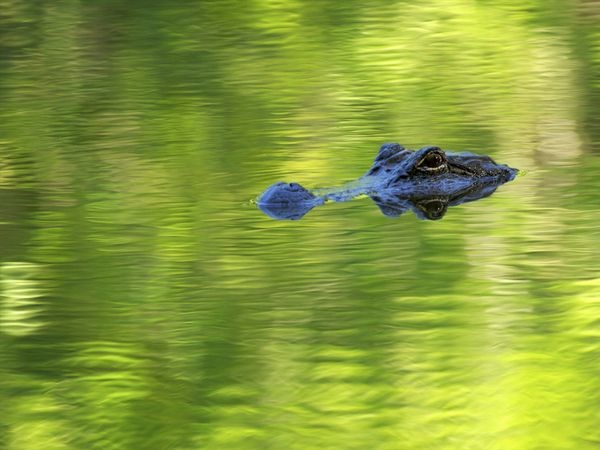 |
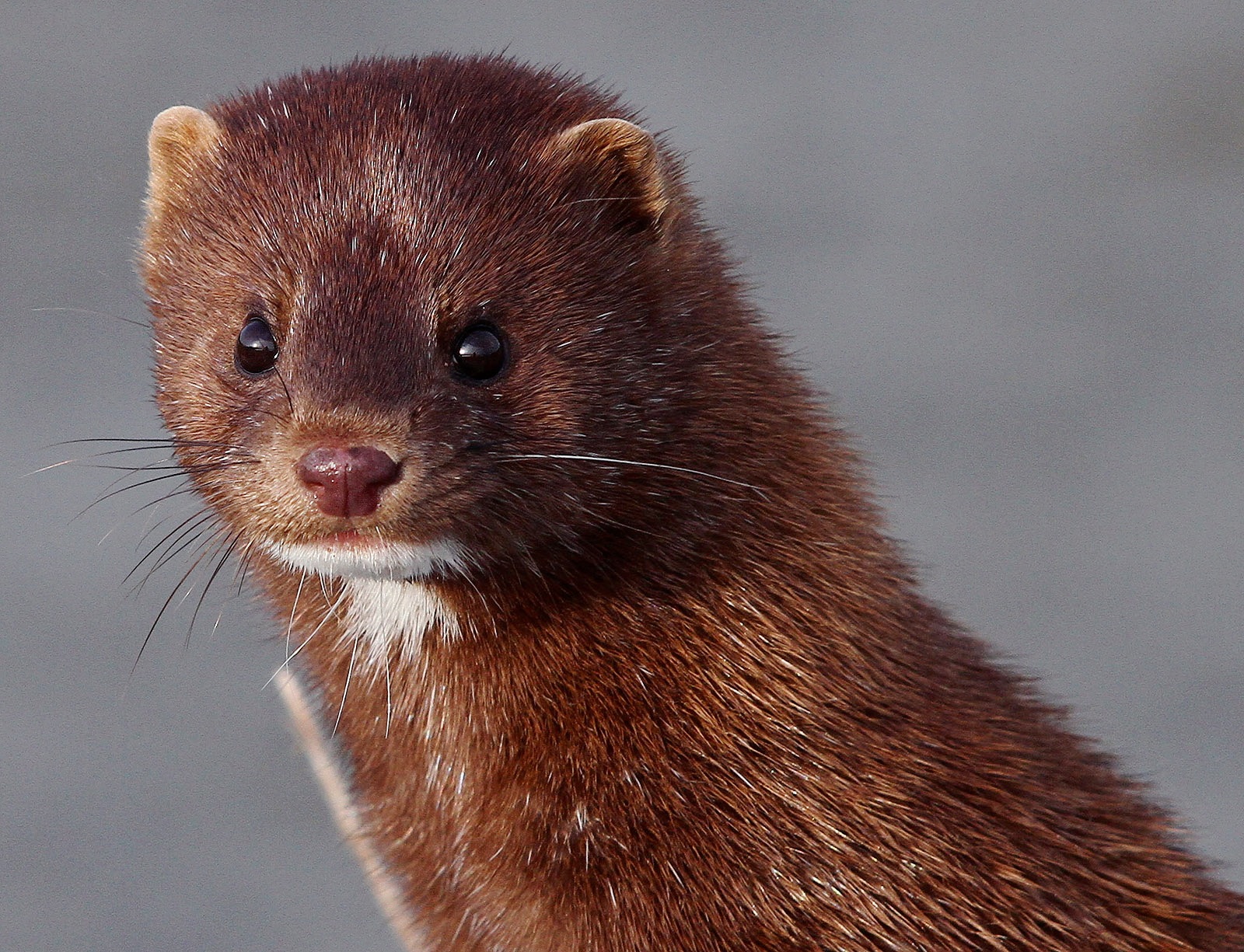 |
The Mink is the shy member of the Atchafalayan population. There are a lot of them out there, but they avoid people and are rarely seen. They're known mostly from their tracks and droppings. Mink sleep all day and hunt all night. They live primarily on fish, small mammals, birds, insects and reptiles, espedially snakes. Mink are particularly fond of rodents : rats, mice, voles, squirrels and chipmunks. A mink is a vicious hunter. It kills its prey by biting down hard and severing the prey's neck. But Mink are not aggressive around humans, and children along the Atchafalaya have been known to raise them as pets. Both Native Americans and Cajuns used to hunt Mink for their warm fur, but today mink are raised on mink farms so very little hunting is done in the Atchafalaya. A typical Mink is two feet long with small eyes and ears, a long thick tail and webbed feet. Its fur is what the mink is famous for. It is very thick and soft and has an outer coat of oily guard hairs which makes it waterproof. Mink dig dens in banks along waterways. They are outstanding swimmers and can dive 16 feet after prey. Canoeists or fishermen out after dark will often see Mink swimming along the surface scanning for prey. If attacked, a Mink, like a Skunk, will spray a predator with a powerful scent which also stings its eyes, nose and mouth. |
| Otters are the clown princes of the swamp. They're famous for playful behavior. As you canoe near any levee or bank, watch carefully for Otters sliding down a mud chute they built. A group of otters will continually climb the bank, slide down, watch the others, then climb the bank again. When no levee or bank is available, Otters often play with stones. They'll collect them, lay them out on a sandbar or mud flat in a pattern, or stack them. Otters are adept at prying open shells. You may see one opening a crayfish, clam or crab, and eating the animal inside. They are also very good fishermen. Apparently unafraid of humans, Otters will come to within feet of your canoe and study you as you paddle by. Atchafalayan Otters average about five feet long and 40 pounds. They have webbed feet and are powerful swimmers. Their hair has two layers, trapping a quarter of an inch between them for insulation against the cold. The outer layer is oiled to keep water out. | 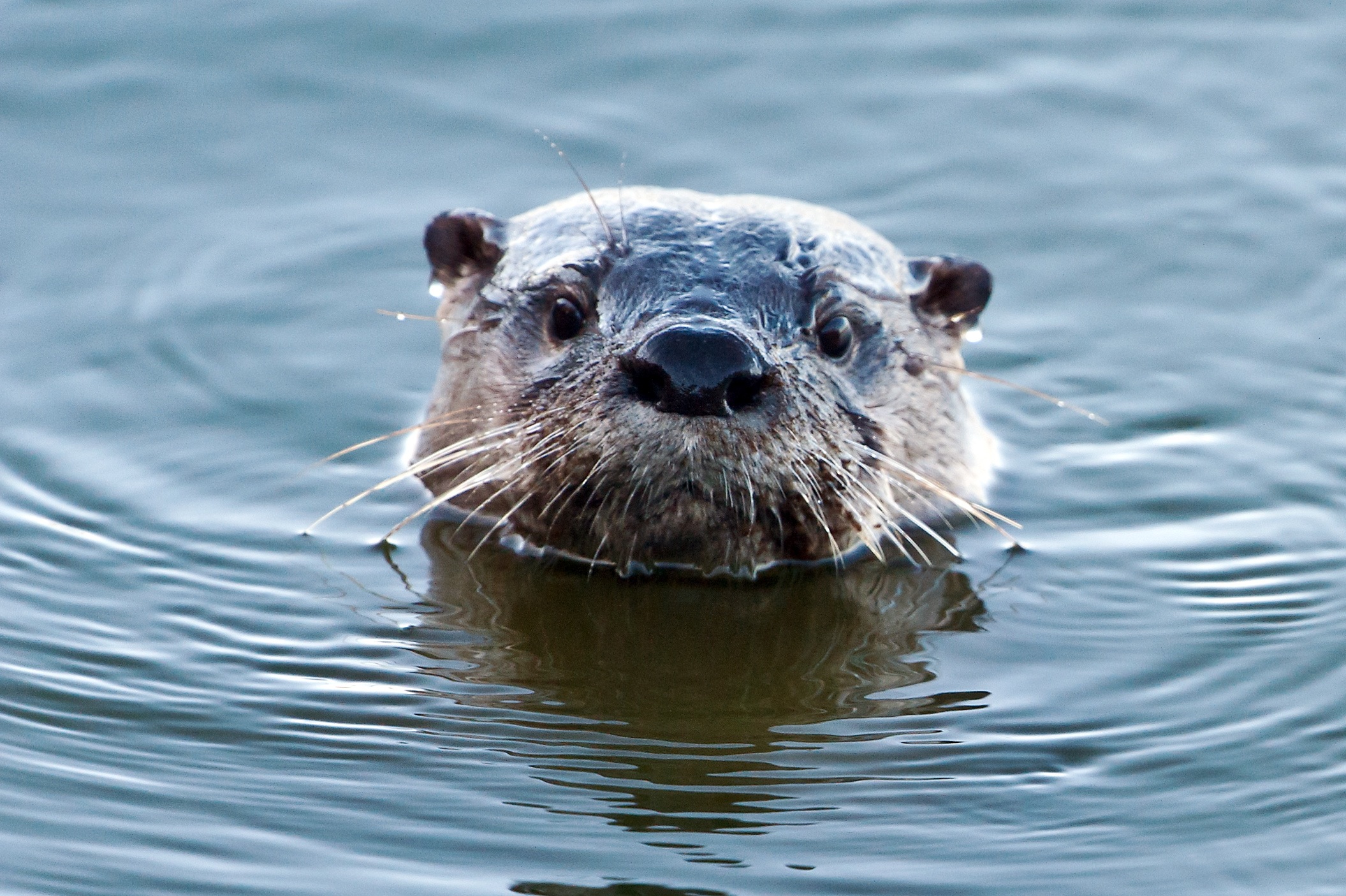 |
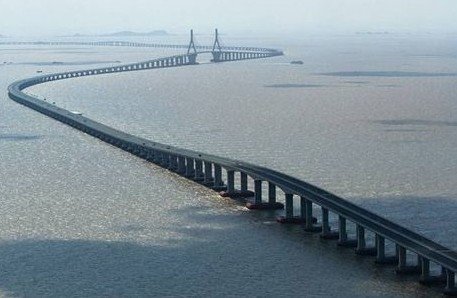 |
The easiest way to get to the Atchafalaya from Kentucky and the Ohio Valley is to drive down I-65 to the Gulf, turn West on I-10 and follow it to the Henderson or Lafayette exit. The best alternate route is to take I-65 to Nashville, turn West on I-40 to Memphis, then take I-55 down through Mississippi. Pick up I-12 to Baton Rouge, where it merges with I-10 on to Henderson and Lafayette. Either way, you'll cross the Atchafalaya Basin on this bridge, seen here in flood stage in the Spring. Either way, it's a two day trip. You might schedule an extra night in Nashville or Memphis, where you can visit the Grand Ole Opry or listen to some Jazz on Beale Street. |
|
|||
|